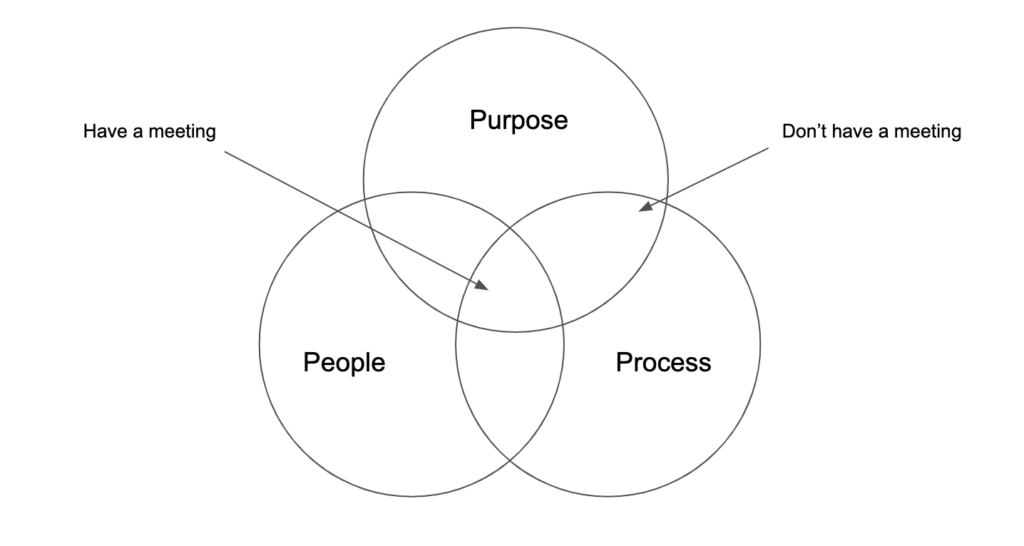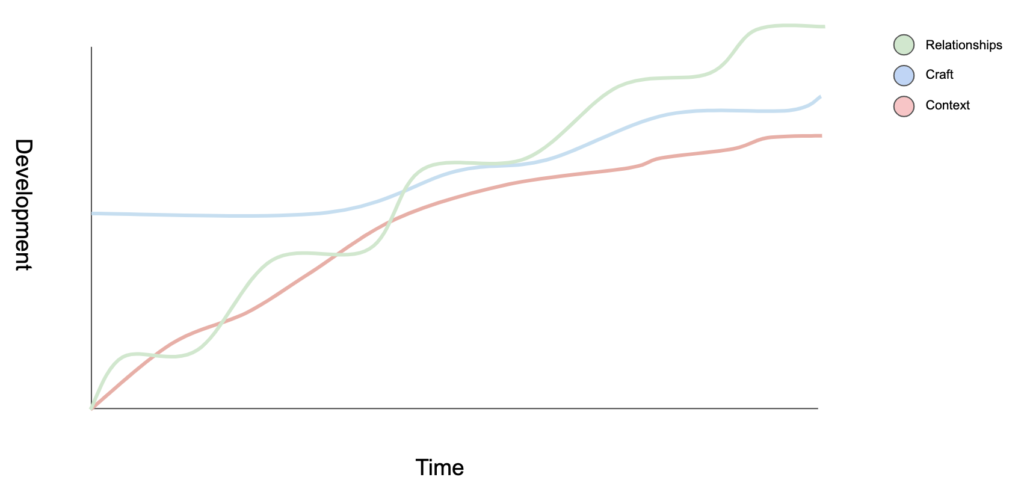Post-covid meetings are changing.
The ebb and flows of meeting fatigue is an endless cycle we’ve all sunk into. Your calendar slowly builds up with well-meaning re-occurrings, or you expand your sphere of influence and become a required voice on critical decisions.
We can’t forget that we have 252 working days in a year, 1260 productive hours, and for many of us 882 of those hours are spent in meetings.
Here are some mental models and house cleaning activities you can perform to remain productive at your work.
When to call for a meeting
Research suggests meetings are an important tool but too often misused. A simple approach to calling for and making a meeting productive is the 3P Principle. Have a Purpose, invite the right people, and make sure a meeting is the right process.

Purpose: A meeting’s purpose is its north star. It sets the tone, reels in tangents, and makes sure the time is well used. The purpose is not a subject or a topic, it is a clearly defined desired outcome of the meeting. Some common purposes of meetings:
- Making a Decision (tough ones)
- Information Gathering (focus on speed of output)
- Brainstorming
- Sharing new strategic information to align the group
This purpose should be the first line of the meeting description and should be the first bit of context mentioned in the meeting itself.
People: Do you have all the right people in the room for this meeting’s purpose? Meetings can deteriorate if you have too many of the wrong people or too few of the right people. Spending time in advance to ask others if you have the right people can go a long way in increasing the productivity of a meeting.
Process: Is a meeting the right process for your purpose? A good litmus test is to look at the meeting’s purpose and decide whether it needs synchronous collaboration. We have at our disposal an abundance of tools to facilitate asynchronous collaboration. Depending on your meetings’ purpose you may need to do extensive prep work. For example, decision-based meetings require a period of information gathering and curation in order for that decision to have context.
Get your 3Ps right and save your colleagues and teams more of their most valuable commodity – time.
Context & Relationships

There are some scenarios where having more or attending more meetings seems to be better. When individuals cannot effectively perform their work due to lack of context or relationships.
New Hires: Performing well in many roles means having context, relationships, and craft. As a new hire, you will have far less context and relationships and meetings are a focused period of time where you can acquire both. This is where your individual purpose can deviate from the meeting’s purpose, and that’s okay! Be a fly on the wall and absorb, it’s likely a very good use of your time.
New Projects: When one starts, your team will lack context. Building common language, principles, and strategic understanding across the group will make meetings attractive.
New Teams: When one forms, you’ll have a collection of miss fits who lack context and relationships. Getting up to speed will happen faster with synchronous collaboration.
Re-Occuring Meetings
One on ones, stand-ups, context meetings, status meetings, blocker meetings. Re-occurring meetings coming from a variety of sources can become clutter and MUST get a periodic haircut. They will come at the expense of deep quality thinking and work in solitude. Wherever possible, these meetings should be optional for all participants. Set the culture for re-occurrings, and let people know you reserve the right to cancel them if you don’t feel they will accomplish their purpose.
Some post-covid nuance
Meetings for many of us are now digitally native. The shift in medium changes the pool of possible meeting purposes, how people interact in meetings, and whether meetings are the right process given the scenario. Some things to note:
Not all participants need to play the role of an active contributor. Meetings can assign roles. Observer, note-taker, participant, facilitator. In a digitally native meeting setting these roles can change how a participant interacts with the meeting and help achieve a meeting’s purpose.
Delayed response: Having a voice means finding an opening and providing quality discourse. With bandwidth and lag, we’re speaking over each other more and need to become more frugal with when we need to have a voice. Developments in talk time thresholds, signal to speak next features and AMA like question curation will likely develop around this pain.
Recordings: We don’t have to be present if we’re playing a non-active role. This means consuming the content of a meeting after the fact is a very good way to get our productive time back.
Have a healthy relationship with meetings, and we all win. 🙏